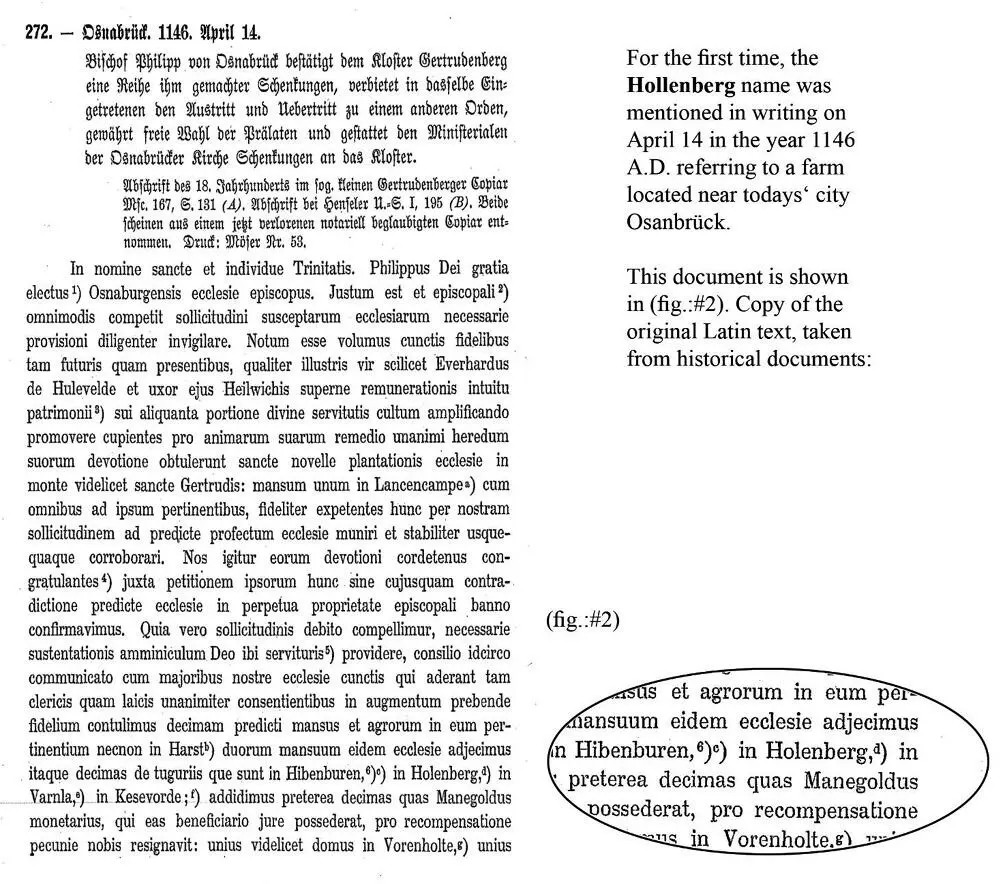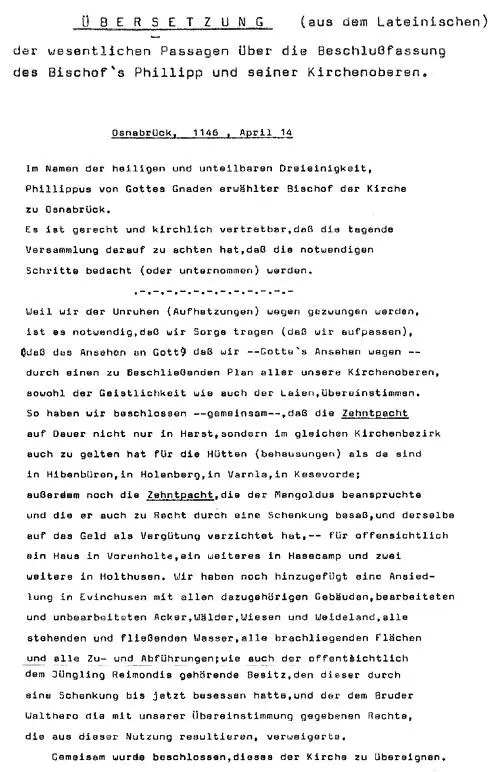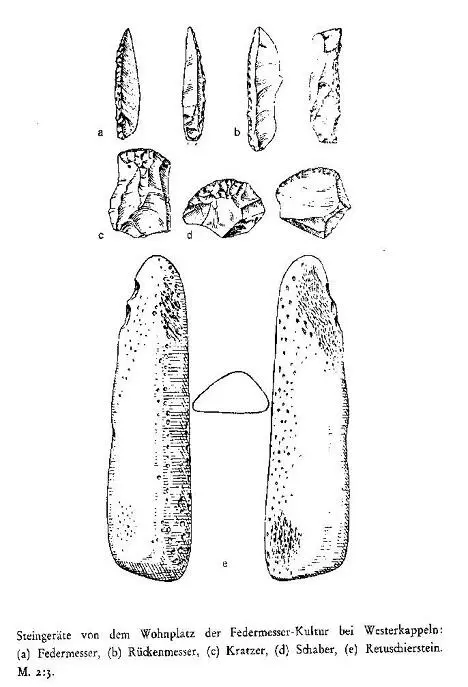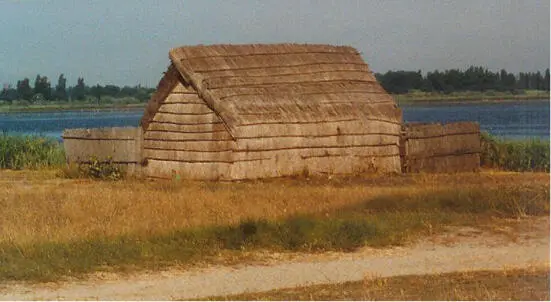Where many others were stampeding the ground for 1000 years and more, like:
• misc. Germanic tribes
• the Romans
• the Saxons
• the Franks (Franconians)
• other European strangers.
Our place: That is the parental home of two boys --- Erich and Heinz ---. Erich, the younger and now the owner, while Heinz, the older moved on becoming a world-citizen with emotional ties to the territory and its people and across the Atlantic.
Our place: That is a location along the hills of the “Teutoburger Wald” (a forest) separating the heartland of the current province of Westphalia in the south (“Münsterland”) from the low plains in North-Germany. A region still very peaceful and rural with fine, old farmhouses a largely unspoiled landscape of forests and fertile farm land as well as marsh and heath.
And last, but not least, plenty of footprints of history, from prehistoric graves and early settlements and many signs of civilization throughout time. Around 800 B.C. iron began to replace copper; and later great tribal move-ments took place from north to south, with the Goth, the Cimbri, the Teutons, and the Vandals, while the Romans were pushing north.
Where It All Began
The only reliable written testimonies from this period were made available by Roman writers like Tacitus. In his book “Germania”, he covers land and people of our area, specifically the Varus battle at 9 AD, which happened to occur only a few miles away.
Our part of our history began with a little note in an old history book, a document written in Latin and found in the State Record Office of Lower-Saxony. The particular details were issued by Bishop Philipp of Osnabrück on 14th, April, 1146 A.D. as shown below:
(fig.: #1)

(fig.: #2)

Translation of fig. # 2 from Latin into German
All official dealings of the time were negotiated and recorded in Latin, since the local population spoke only an old “Low-German” idiom, which turned later into a Low-German “Plattdeutsch”.
Written documents of Germanic tribes of that time are rarely available with only very few examples, like the EDDA story of the North-Germanic “Vikings”. Thus, using my own knowledge of Latin with some third party corrections, I am giving a translation of the most relevant sections of the resolution from April 14 of the year 1146 A.D.

Translation from Latin of Documents of the
Office of the Bishop of Osnabrück Issued on April 14-th
of the Year 1146 A.D.
This document refers to a resolution of the same day by Bishop Phillip and the Superiors of the Christian Church of the bishopric of Osnabrück in Saxony. The resolution goes as follows:
“In the name of the holy and indivisible Trinity, Phillippus of God`s Grace, chosen Bishop of the Church at Osna-brück -----“. -----“It is just and ecclesiastically justifiable, that the acting assembly pays attention to the fact, that necessary steps are to be considered (or to be undertaken).”
----------------------------------------
“Because of the unrest and agitation, we are concerned out of necessity, and for God’s prestige; we, all
Superiors of the Christian Church as there are the clergy as well as all the lay”.
(Explanation: The bishops had only moderate success in getting along with local people.)
“Such, we have jointly concluded, that the tithe (= definition: = a tenth part of the yearly proceeds arising from lands and from personal industry of the inhabitants for the support of the clergy and the Church.) is permanently to be levied not only in Harst, but in the same church district also for the dwellings in Hibbenbüren, in Holenberg, in Varula, in Kesevorde; furthermore, also the tithe for a house in Vorenholte, which was rightfully claimed by Mangoldus as part of a donation, and for which the same forgave all monetary compensation, and also for one in Hasencamp and two other in Holthusen. We also add a settlement in Evinchusen including all buildings, farm-land, forests, meadows, all fallow-land, and all routes, coming and going,“
“It was jointly concluded, that all the above is to be transferred to the Church“ (Translation by: Heinz Niederste Hollenberg)
Here is stated that Bishop Phillippus and the Superiors of the Christian Church of the bishopric of Osnabrück decide in the name of the Holy and Indivisible Trinity to permanently levy the “ tithe” on housings (dwellings) like Hibbenbüren (= today: Ibbenbüren), Holenberg, Varula, Kesevorde and others.
Existing ‘registers of proceeds ‘, dated around 1180, show the income of the Dompropst Lentfried (= an ecclesi-astical principal!). These listings prove that a number of farms of our area, well-known to this day, had to make contributions to the Episcopate in Osnabrück.
Noteworthy is also: The Episcopate of Osnabrück was founded by Charlemagne in 785 AD as the first bishopric in the land of the Saxons. He appointed Bishop Wiho, a disciple of the Apostel Bonifacius, to serve as the first bishop in Osnabrück in the year 804 AD.
All this supports the assumption that these same farms still known today existed indeed, and their families used to live and work there. It is very unusual, that the same family line stayed on, struggled and survived until modern days and show early in the 21st century what happened to the Hollenbergs.
However, before going into particulars, I like to look back into the preceding centuries with additional details about the rich culture and historical events of that region.
Time before A.D. and Early Settlements and Dwellings in the Region
What happened in those earlier times in the country of the Cherusker and the Saxons?
The change from a hunter or fisherman to a resident husband-man or stock-farmer took place quite likely around 2000 BC.
The findings by Dr. Günther and others during the 1950’s and 60’s have shed additional light onto the history of settlements in this region during ancient times. They uncovered traces, vestiges of oval huts with corresponding pits of settlements and workplaces dating back to the hunter and fisherman period.
The sketch (fig.:#3), shows a likely reconstruction of these huts, reflecting details of dwellings from the Feather-Knife (Pen-Knife) period near Westerkappeln. (About 9000 B.C. – 8000 B.C.)
This is based on excavation findings similar of Spanish shepherd huts, as shown in a reconstructed ancient fishing hut from the Mediterranean coast of Northern Spain and Southern France.
Early Dwellings from the Feather-Knife Period near Westerkappeln

(fig.: #3)
Huts found on a refuge near Westerkappeln
Miscellaneous stone-tools found in same
excavation near Westerkappeln
Reconstructed ancient Spanish shepherd’s hut..


Another typical example of early living quarters (fig.:#4) shows an evolution to a wooden structure. The Archa-eological-Open-Air- Museum in Örlinghausen, near Detmold, has reconstructed this design based upon nearby findings. The building is 69 feet in length (23 m) and 16,5 feet in height (5,5 m), totalling an area of 1200 sq. ft (120 sq. mtr.) Such a structure was build with about 200 oak-trunks and can be assumed typical for the area around 1500 B.C. (See below)
Читать дальше


















